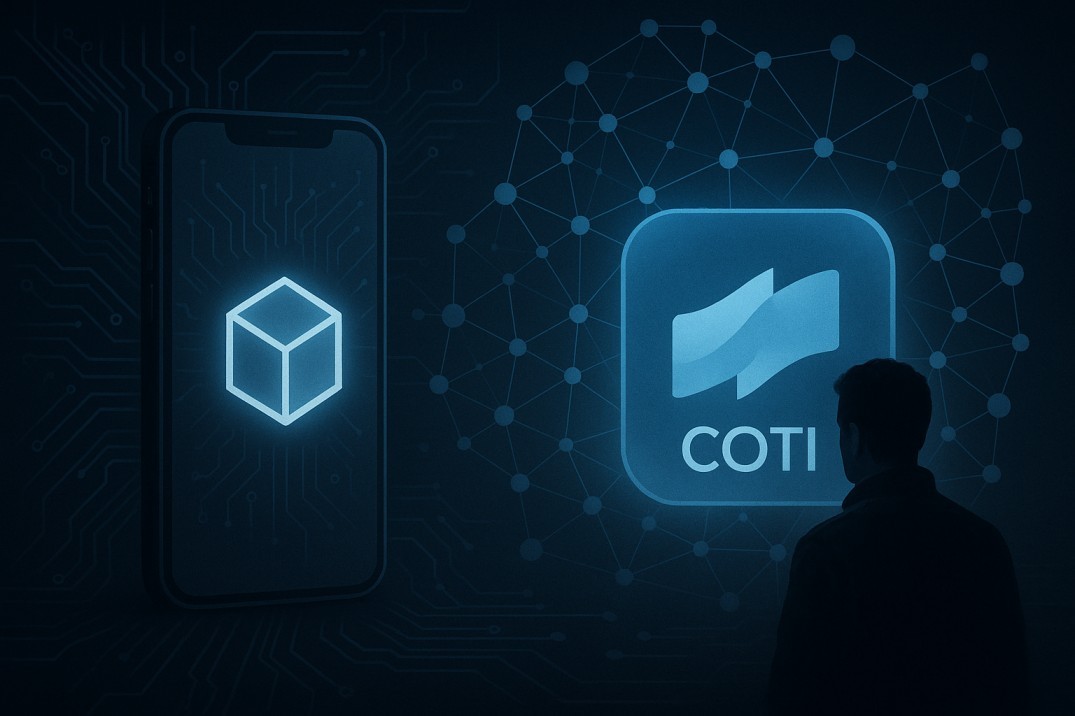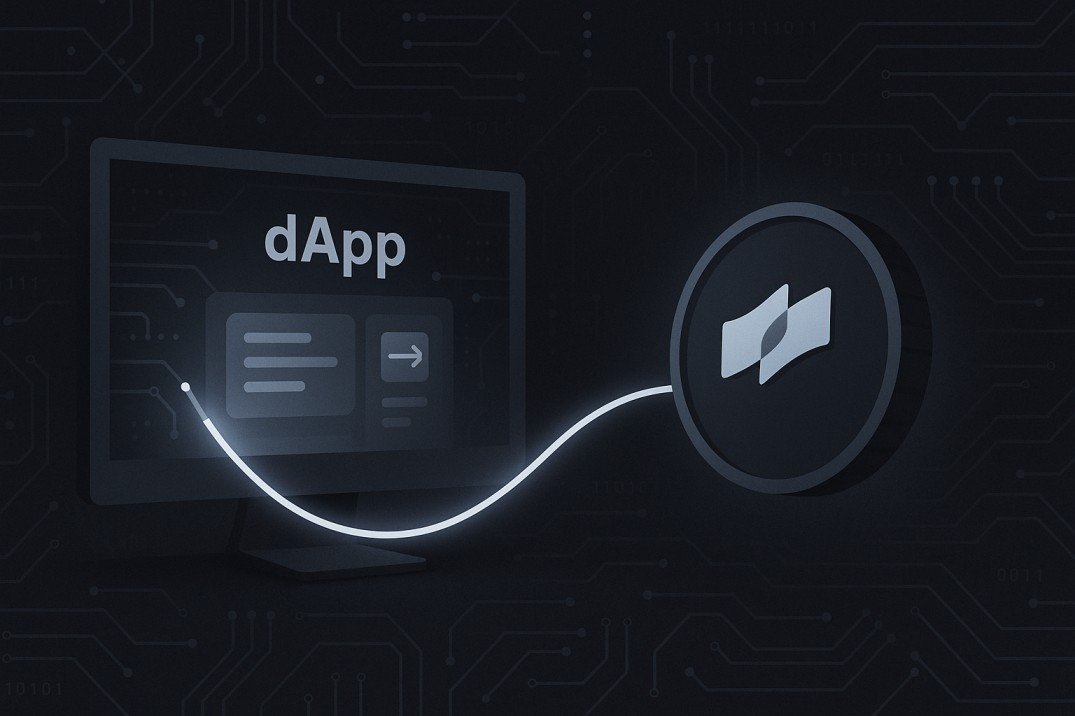TL;DR
- Many dApps build on public chains without a solid privacy or compliance foundation-and risk hitting a wall as users, regulators, and enterprises demand confidentiality.
- COTI brings a privacy-layer built on garbled circuits, enabling encrypted smart-contract logic while preserving auditability and interoperability.
- Benchmark results show COTI's solution is dramatically faster than alternative privacy technologies: "COTI's solution is thousands of times faster... rather than milliseconds or even seconds."
- In the words of CEO Shahaf Bar‑Geffen: "We've not built a solution that is all or nothing... It offers selective disclosure, enabling users to decide what you disclose to whom."
- If your dApp handles sensitive data, regulated flows, real-world assets or institutional partners, using COTI's privacy architecture early may be the difference between long-term survival and future rework.
Imagine the dApp you use daily-perhaps a decentralized exchange, a social-app built on blockchain, an identity service, or a tokenised asset marketplace. It may work fine today-but ask a critical question: What happens if the next wave of users demand privacy, compliance, and institutional-grade features?
Transparency has always been a blockchain's virtue. Every transaction visible, every contract state open, every ledger public. That's powerful-but it also means that many dApps are built on foundations that may not endure when confidentiality, auditability and regulatory integration become non-optional.
That's where COTI enters the story. COTI is not just another chain or token. It offers a privacy layer engineered for dApps that cannot afford to ignore privacy. Your favorite dApp might currently thrive, but without a privacy-capable infrastructure in place, it may face challenges ahead. This article explains why COTI could be essential for that survival.
We'll look at:
- The emerging privacy demands for dApps;
- How traditional chains fall short;
- What COTI's garbled circuit architecture brings;
- And why surviving the next stage of Web3 may mean embracing this quiet shift now.
The Rising Need for Privacy in dApps

Changing expectations
When blockchain was first offered as the future of finance and applications, the focus was on openness and decentralisation. But for many real-world use-cases, openness becomes a barrier: enterprise flows, identity systems, tokenised real-world assets, healthcare data, institutional trading-all these require confidentiality.
Users increasingly expect that their data (transaction history, identity, holdings) remains private. Governments and regulators expect auditability. Enterprises expect both security and compliance. dApps built on the assumption of full transparency may face one of these problems: they'll expose too much, or they'll be barred from institutional usage.
Technical & strategic risk
A dApp might launch today, gain users, be profitable-but risk future rewrites if it needs to retrofit privacy or compliance. The cost of migration, redesign, or switching chains can be large. Moreover, as more protocols and assets require confidentiality, those that don't may be sidelined.
Competitive differentiation
Beyond survival, privacy becomes a differentiator. dApps that can offer confidential DeFi, private governance, tokenised assets with hidden parameters or institution-ready workflows will stand out. Having an infrastructure layer that already supports these features gives a distinct edge.
Why Many dApps Are Built on Foundations That May Not Last
Public chains and transparency
Most popular dApps run on networks like Ethereum or other major chains where every transaction, contract call, and wallet address is visible by design. That works for many use cases-but when data is sensitive, that visibility becomes a liability.
Privacy solutions that fall short
Some chains adopt privacy coins, zero-knowledge proofs, or other specialised layers-but each carries trade-offs: performance bottlenecks, limited developer tooling, or regulatory uncertainty. A dApp may believe it is "private" when in fact it lacks full confidentiality or compliance features.
Legacy architecture
Once a dApp has a large user base and tokenomics, shifting to a privacy-native chain or re-architecting core logic is hard. The technical debt is real. That's why building with a privacy-capable foundation early can avoid costly future problems.
What COTI Brings: A Privacy Layer for dApps

Garbled Circuits: Foundation of Confidential Logic
At the core lies the use of garbled circuits (GCs) - a cryptographic technique that allows parties to perform joint computation without revealing their private inputs. COTI writes:
In simpler terms: smart-contract logic can run on encrypted inputs and encrypted state, yet produce meaningful outputs - without exposing everything to the public. That means for a dApp: you can have confidential token transfers, private governance, hidden asset valuations - even multi-party logic - all while remaining interoperable with EVM tools.
Developer-friendly & interoperable
COTI builds this privacy layer in a way that dApps can adopt without rewriting everything. Because it retains EVM compatibility and standard tooling, a dApp that already uses Solidity, standard wallets and developer frameworks can extend into this privacy layer rather than rebuild from zero.
Selective Disclosure: Control Meets Privacy
As CEO Shahaf Bar-Geffen said:
That means your dApp can choose which data remains encrypted, and which data can be revealed to auditors, partners or regulators. It's not blind secrecy-it's programmable privacy. That flexibility is for dApps a strategic asset: you can launch transparently, then add confidential flows; you can comply when needed.
Performance and scalability
According to benchmarking:
What this means: the dApp you build is less likely to suffer performance or cost issues because the privacy layer is too heavy. That removes a major barrier to adoption-privacy with performance.
Scenarios: When a dApp Really Needs COTI
Confidential DeFi
Suppose your dApp is a DeFi platform but wants to offer confidential collateral, hidden borrow amounts, or private bidding. On a typical chain the logic or amounts could be visible; on COTI you can execute contracts where these remain encrypted, yet still verifiable.
Tokenised Real-World Assets
Your dApp tokenises fine art, real estate, or private equity. These assets often require confidentiality around valuations or ownership stakes. COTI lets you encode those transfers on-chain in encrypted form, giving institutions the confidence they need.
Private Governance & DAOs
If your dApp supports a DAO, voting or treasury management you may want votes or holdings private-but still auditable. With COTI's selective disclosure you can let only certain parts be revealed while the rest remains encrypted-maintaining both transparency and confidentiality.
Identity & Social dApps
Imagine a social or identity dApp where participants share sensitive data or credentials-but you don't want those exposed on-chain to anyone. By using COTI's privacy layer, you can validate identities, reputations, relationships without revealing underlying sensitive details.
Enterprise & Compliance Use-cases
Enterprises are increasingly Web3-aware. They'll work with your dApp only if you can meet data-privacy and regulatory demands. A dApp built on COTI is already better placed for that-because confidentiality and auditability are baked in, not added later.
Why Ignoring This Could Be Risky
Future-proofing
Privacy demands are growing, not shrinking. If your dApp has to retrofit privacy later, you face architectural risk, delays, extra cost.
Missing the Institutional Lane
A public-chain dApp may thrive among crypto-native users, but if you wish to scale into institutional or regulated workflows, you may find you lack key features-and potential users or partners will pick solutions that already have them.
Competitive edge
As more dApps compete, giving users and partners privacy becomes a differentiation. If your favorite dApp does not offer it, others may out-innovate.
Regulatory & compliance pressures
Even decentralized systems are under scrutiny. If your dApp exposes sensitive data or lacks audit paths, you may face regulatory friction. A dApp built on a privacy-capable layer like COTI is better positioned.
Limitations & Things to Consider
While COTI is EVM-compatible, integrating encrypted logic may require new developer patterns and thinking.
- Your user experience must account for encryption overhead-even if minimal. Clarity for users is key.
- Data privacy is not just technical-it relies on governance, permissions, audits. You'll need to design flows accordingly.
- Privacy layering doesn't remove all risk; things like metadata leaks, device security, off-chain data still matter.
- While the benchmarks are impressive, adoption, ecosystem maturity and tooling for privacy dApps are still growing-choose a partner that supports you.
Final Thought
Your favorite dApp may be thriving now. But thriving in Web3 soon will require more than slick UI and token features. It will demand confidentiality, compliance, and adaptability. That's not optional-it's foundational.
COTI offers one of the most advanced privacy-capable layers: built on garbled circuits, high performance, EVM-compatible, and designed for dApps that must survive in the long term. If your dApp handles real users, real assets, sensitive data, or institutional workflows, then not planning for privacy might mean planning for future rework.
In a world where transparency and confidentiality must coexist, COTI may well be the infrastructure your dApp needs-not just to run, but to endure.











